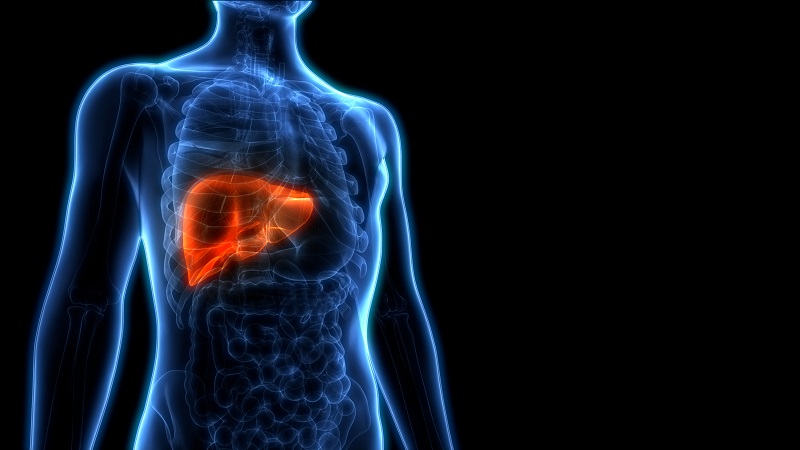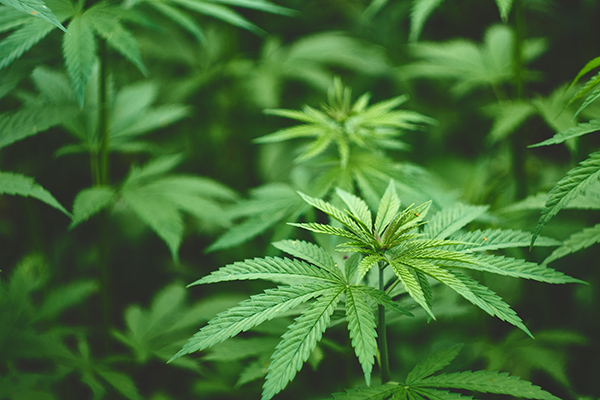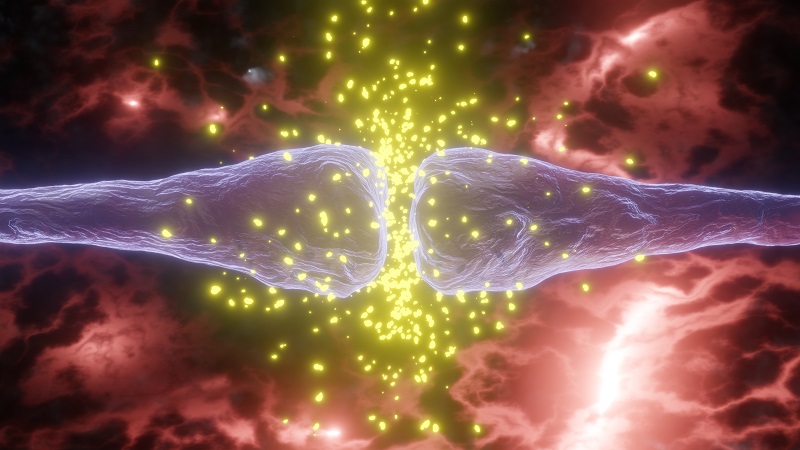Injected CBD Oil Can Protect Your Liver from Damage: Here’s How

Cannabinoids are a group of diverse compounds that have been extensively studied for their potential in treating a wide range of diseases, including epilepsy, cancers, pain, fibromyalgia, irritable bowel syndrome, and skin disorders.
CBD oil-integrated products such as sleeping mask, recovery lotion, facial cream, eye serum, and anti-aging creams are popular topical therapeutic agents to achieve pain relief and optimal skin health.
Cannabinoids are derived from and are unique to the Cannabis Sativa plant – which is native to Central and South Asia but cultivated worldwide for its therapeutic properties. While the derivatives of this plant have been used since ancient times for medicinal and recreational purposes, in recent times, a growing body of research points to the powerful therapeutic potential of a specific cannabinoid – CBD, an abbreviation for cannabidiol.
After the first cannabinoid was discovered in 1964, its natural equivalent (endocannabinoids) in the human body, as well as cannabinoid receptors, were also identified. CBD constitutes approximately 40% of extracts from cannabis and has pharmacological effects minus the psychoactive or addictive effect linked to marijuana.
Liver diseases present a huge disease burden across the world, irrespective of race, age, or region. As per the World Health Organization, chronic liver diseases account for 46% of global chronic diseases and are the second leading reason for mortality in the U.S. According to the American Liver Foundation, 88,000 people die due to alcohol-related diseases, such as liver diseases, every year.
Although alcohol abuse is behind a significant number of liver diseases and injury, liver damage is also caused by certain genetic abnormalities, auto-immune conditions, and viral infections.
CBD has shown immense promise as a therapeutic agent in preventing liver diseases and in reducing the severity of liver damage.
The liver and its functions
The liver is the largest internal organ in the human body and is located in the abdomen’s right upper quadrant. Weighing about 3.5 pounds (1.6 kilograms), the liver performs a wide range of critical functions, including
- The production of bile that is essential for the digestion of fats.
- Filtration of toxins.
- Metabolism of fats, proteins, and carbohydrates.
- Storage of fat-soluble vitamins such as vitamins A, D, K, and E, and minerals.
- Synthesis of albumin- a type of blood protein.
- Excretion of bilirubin, which is an end product that remains after red blood cells are broken down.
- Storage of sugar in the form of glycogen, which is an emergency reserve of sugar.
- Excretion of drugs, hormones, and cholesterol.
- Activation of enzymes that carry out crucial body functions.
- Production of clotting factors.
What causes liver diseases?
Parasite and viral infection
Viruses and parasites can lead to liver infection, causing inflammation and reduced liver function. These viruses can spread through contaminated food, feces, water, blood, or semen. The common viral infections that affect the liver are hepatitis A, hepatitis B, and hepatitis C, although two other forms – hepatitis D and hepatitis E – also affect the liver.
Immune system dysfunction
Autoimmune conditions are where the immune system cells mistakenly attack the healthy cells of the body. Some of the autoimmune diseases that involve the liver include
- Autoimmune hepatitis
- Primary sclerosing cholangitis
- Primary biliary cholangitis
Genetics
Inheritance of an abnormal gene from either or both parents causes the build-up of certain substances in the liver, leading to liver damage. Some of the liver conditions caused by genetic abnormality include
- Wilson’s disease
- Hemochromatosis
- Alpha-1 antitrypsin deficiency
Liver cancers can also have a genetic link but are related to chronic alcohol abuse induced liver damage.
Common causes of liver damage
- Chronic alcohol abuse
- Drug abuse
- Toxic heavy metals
- Accumulation of fat in the liver – known as fatty liver disease
- Certain prescription medications
- Certain herbal preparations
CBD oil as a potential cure for viral hepatitis
Viral hepatitis is a serious and contagious liver infection caused by a group of viruses characterized by liver damage and inflammation. The different forms of hepatitis (A, B, C, D, and E) are caused by viruses that are named with the same alphabet as the type of hepatitis they cause. For instance, hepatitis A is caused by the hepatitis A virus, and the hepatitis B virus causes hepatitis B, and so on.
Out of these, hepatitis C has no vaccines and can lead to cirrhosis and, eventually, liver cancer. Researchers evaluated the effect of CBD oil in preventing hepatitis C as well as hepatitis B virus replication. The study featured in Pharmacognosy Journal found that CBD oil administration at ten micromolar concentrations inhibited hepatitis C viral replication by as much as 87%. CBD oil also caused the death of cells infected with the hepatitis B virus, while not affecting healthy cells in any way.
Researchers concluded that CBD injection had the potential of mitigating both autoimmune and viral hepatitis because of its powerful action on CB2 receptors. By inhibiting pro-inflammatory cytokines and suppressing T-cells (immune cells) proliferation that causes autoimmune hepatitis, CBD exhibits strong therapeutic potential for treating infectious and autoimmune hepatitis.
CBD protects against liver inflammation
The endocannabinoid system or ECS refers to a biological system that is made of a type of neurotransmitters (chemicals in the brain that relay signals) known as endocannabinoids as well as receptors called cannabinoid receptors. The endocannabinoids bind to these receptors that are abundantly expressed in the central and peripheral nervous systems.
The endocannabinoid system influences multiple cognitive and physiological processes, such as pregnancy, fertility, postnatal and prenatal development, immune system function, mood, appetite, memory, pain and pleasure sensation.
Researchers identified two types of cannabinoid receptors – the first one – CB1 was cloned in 1990, while in 1993, the second receptor – CB2 was cloned. CB1 receptors are present in large numbers in the nervous system and brain, apart from other tissues and organs. CB2 is predominant in peripheral tissues and the immune cells.
Researchers also identified two forms of endocannabinoids, including AEA or anandamide and 2-AG or 2-arachidonoylglycerol. The endocannabinoids bind to CB1 and/or CB2 receptors to ensure normalcy of physiological and cognitive functions.
A deficiency of endocannabinoids or low levels of cannabinoid receptors is believed to cause many diseases, including pain, inflammation, and autoimmune conditions.
The role of endocannabinoids in liver diseases, including cirrhosis and hepatic injury, has been extensively studied. Many studies show that both cannabinoid receptors and endocannabinoids concentration in the tissues are increased during disorders such as cancer, multiple sclerosis, cardiovascular diseases, Parkinson’s disease, and chronic pain. The enhanced efficiency of cannabinoid receptor binding and the action of endocannabinoids contribute to a reduction in distressing symptoms of these disorders.
The nonparenchymal cells and hepatocytes (parenchymal liver cells) are known to produce some amount of endocannabinoids. In the cases of fatty liver disease and acute hepatitis, the levels of the endocannabinoid – anandamide- increase. Liver cells in adults express CB1 receptors, although, in liver injury, there is upregulation of both CB2 and CB1 receptors in the liver. There is evidence that the endocannabinoid system (ECS) is upregulated in liver diseases and affects inflammation, liver cell injury, the formation of fibrosis, portal hypertension, and cirrhotic cardiomyopathy.
Studies also indicate that endocannabinoids and CB2 receptor activation have a protective role in reducing inflammatory responses linked to chronic liver diseases, including non-alcoholic fatty liver disease (NAFLD), viral hepatitis, and ALD (alcohol-related liver disease).
CBD protects the liver against alcohol abuse-related damage
Alcohol abuse has been established as one of the primary risks of liver disease. Several conditions, including liver fibrosis, alcoholic steatosis, steatohepatitis, cirrhosis, and liver cancer, are linked to alcohol abuse. A study by Adejumo et al. examined whether cannabis extract had a protective effect on the liver in people who abused alcohol.
Researchers analyzed patient records of people with abusive alcohol use history and categorized them into non-cannabis users, dependent cannabis users, and cannabis users who were non-dependent. They found that those who used cannabis had lower chances of developing alcohol-related liver disease (ALD).
Another study featured in the Free Radical Biology and Medicine was funded by the NIH (National Institutes of Health) and NIAAA (National Institute on Alcohol Abuse and Alcoholism).
In this study, researchers found that cannabidiol had the potential to protect the liver against alcohol-induced damage.
Researchers injected ethanol into mice for five days to induce the impact of alcohol abuse on the liver. Before the ethanol injections, CBD was administered to study its protective effect.
The results indicated that cannabidiol or CBD oil administration has a protective action on the liver and prevents the accumulation of fats – a condition called steatosis that leads to fatty liver disease and, eventually, causes extensive liver damage. The researchers believe CBD protects the liver by inhibiting oxidative stress and also by preventing fat accumulation.
Oxidative stress relates to a condition marked by inflammation and cell injury caused by excessive production of ‘free radicals.’ These free radicals are singlet oxygen electrons that are highly unstable and are produced in the body during metabolism and energy production processes. As they are missing an electron in their structure, these radicals are highly unstable and attack other cells to steal an electron to become stable. The healthy cells attacked, then become unstable, thereby setting up a chain reaction of cell and DNA damage. The body’s natural antioxidants, such as superoxide dismutase and glutathione, can neutralize these free radicals. However, disease conditions, injury, pollutants, and a bad diet can cause excessive free radical build-up, leading to tissue damage.
CBD has a powerful antioxidant effect, and some studies show its antioxidant effect is 30 to 50% more than the most powerful natural antioxidants such as vitamins C and E.
Experimental data also show evidence that CBD offers a wide range of therapeutic prospects in combating alcohol use disorder and in preventing liver and brain damage related to alcohol abuse. Studies show CBD administration helps achieve drinking reduction, which makes it a viable therapeutic agent for treating alcohol use disorder. CBD also exerts a protective effect on the brain and liver that mitigates the impact of alcohol-induced liver and brain diseases. Researchers propose CBD treatment to individuals who are not able to stop or reduce alcohol consumption, which is one of the primary reasons for liver disease development and progression.
CBD, according to scientists, may have multiple positive effects apart from protection against liver disease. These effects include anti-anxiety, antiepileptic, analgesic (pain relief), and cardioprotective effects.
CBD’s therapeutic potential against liver cancer
A 2014 study conducted by Hussein et al. published in Alexandria Journal of Medicine sought to explore the cannabis plant extract’s therapeutic effect on liver cancer due to dimethylnitrosamine.
Dimethylnitrosamine (DMNA) is also commonly called NDMA (N-Nitrosodimethylamine) and is a toxic compound that induces liver cancer. Pesticides, hazardous waste, tobacco, cheese, cured meats, beer, fish, and certain cosmetic products are the primary sources of NDMA for humans. Foods that contain a compound called alkylamine are also sources as alkylamine is converted to NDMA in the stomach.
Liver (hepatocellular) cancer is one of the major types of cancers that have limited therapeutic options in the advanced stages. In the study, researchers divided mice into five groups. The first group received corn oil; the second was given DMNA injections for 12 weeks; the third group was pretreated with cannabis plant extract for two weeks prior to DMNA injections. The fourth group was given both cannabis extract and DMNA injections simultaneously. The last group was given cannabis extract daily after a DMNA injection. The researchers measured two enzymes, called caspase-8 and telomerase reverse transcriptase, that are linked to cancer development and progression.
They found that both these enzymes were lesser in groups that received cannabis extract and concluded that the cannabis extract exerted a protective effect against liver cancer in groups that were pretreated with the therapeutic compound before receiving DMNA injections.
Cannabinoids such as CBD induce ‘apoptosis’ or cell death and reduce certain enzymes associated with tumor progression, which is believed to be the primary pathway of their anti-tumor effect. This indicates CBD’s potential as a therapeutic agent for liver and other forms of cancer.
More articles:











